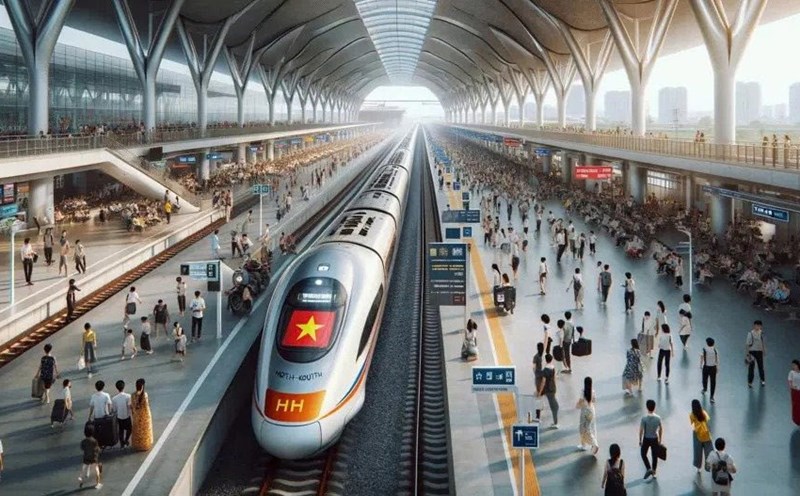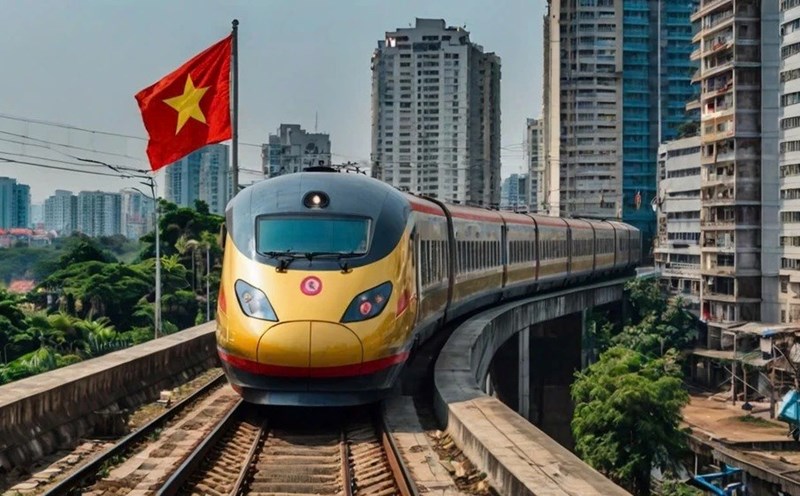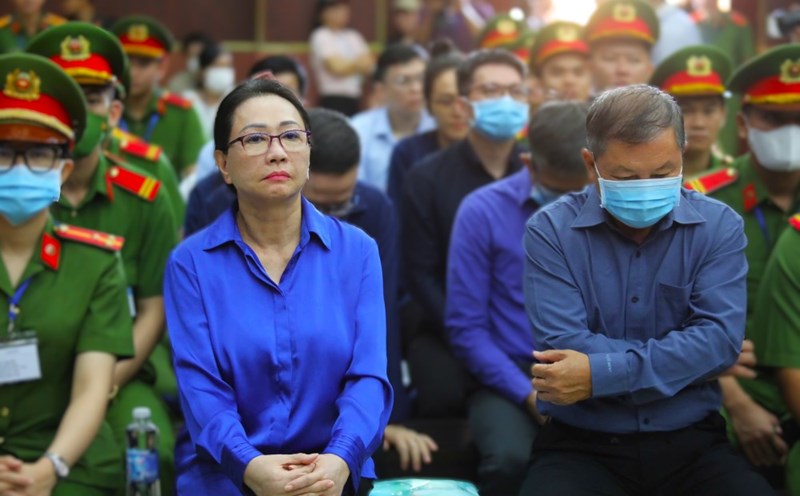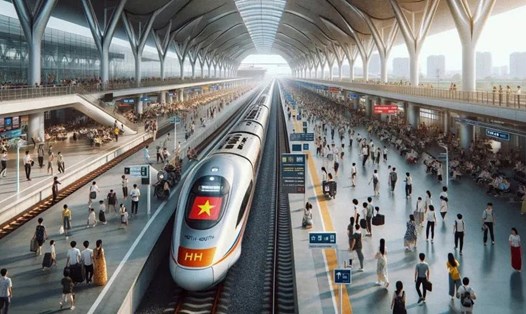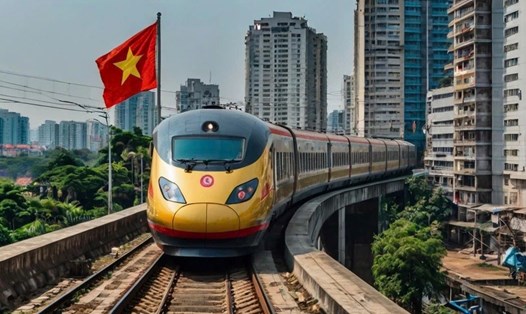Continuing the 8th Session, discussing at the group on socio-economic development on October 26, Minister of Transport Nguyen Van Thang informed about a number of transport projects as well as the use of sea sand as filling material for transport works.
According to Minister Nguyen Van Thang, the Government has reported to the National Assembly for consideration and approval of the North-South high-speed railway project (from Hanoi to Ho Chi Minh City).
There are currently three major railway projects under implementation, including three sections: Lang Son - Hanoi; Hanoi - Ho Chi Minh City; Ho Chi Minh City - Can Tho.
The Lang Son - Hanoi route is currently operating a dual gauge railway (including 1,000 mm and 1,435 mm gauge). The Government will soon continue to submit to the National Assembly to upgrade this section of the route.
In which, the Lang Son - Hanoi route is being planned, it is expected to propose exploiting the standard gauge for passenger and cargo transport, with a speed of about 200 km/h.
Regarding the Ho Chi Minh City - Can Tho route, the Ministry of Transport is preparing to complete a pre-feasibility report to submit to the Government and the National Assembly. The route will operate on a standard gauge railway with a design speed of 200 km/h, transporting passengers and goods at about 170 km/h, with a length of 174 km, and a total estimated investment of about 9.98 billion USD (equivalent to 220,000 billion VND).
This project will be divided into 2 phases, in which phase 1 is a single-track road, clearing the land once, costing about 155,000 billion VND, exploiting the transport of both passengers and goods due to the huge demand for goods. When put into operation, traveling from Ho Chi Minh City to Can Tho will only take 1 hour.
Regarding upgrading the two-lane highway, the Minister of Transport said that the Government has recently given very strong direction.
According to the Minister, the previous decision of the National Assembly and the Government to deploy two lanes was appropriate, because in reality, many routes previously had very low traffic volumes. After a period of development, the need for upgrading is natural.
The Ministry of Transport, in coordination with other ministries, is upgrading all 2-lane routes to 4 lanes and some limited 4-lane routes to full completion, even larger.
However, the Minister pointed out the fact that when working in Europe, many of their highways still have 4 lanes but do not have emergency lanes. It is worth mentioning that people's awareness is very good, when going to that section, they accept to slow down and drive leisurely...
"That shows that it is not necessary for big roads to be wide. Statistics on the causes of accidents show that more than 90% of the causes come from the awareness of traffic participants. The bigger the road, the higher the speed, but the lower the awareness, the more catastrophic the accident!
Therefore, along with investment in traffic infrastructure, there must be many solutions, including the participation of the entire political system to change traffic habits and culture. Only by improving traffic culture can traffic accidents be significantly reduced," Minister Nguyen Van Thang emphasized.
Regarding the filling materials in the Mekong Delta region, the Minister said that based on reserves and practical needs, we do not lack sand to promote the infrastructure of the Mekong Delta. However, when many projects have to be implemented at the same time, the demand for sand increases suddenly, leading to local shortages.
Exploiting sea sand instead of river sand will significantly reduce the pressure on using river sand. This is an abundant source of material and the Ministry of Transport is expanding the pilot project on the northern and central expressways.
It is expected that by the end of this year, the permission to widely use sea sand for all expressways will be announced. However, exploitation must be at a moderate rate to ensure sustainable socio-economic development.

